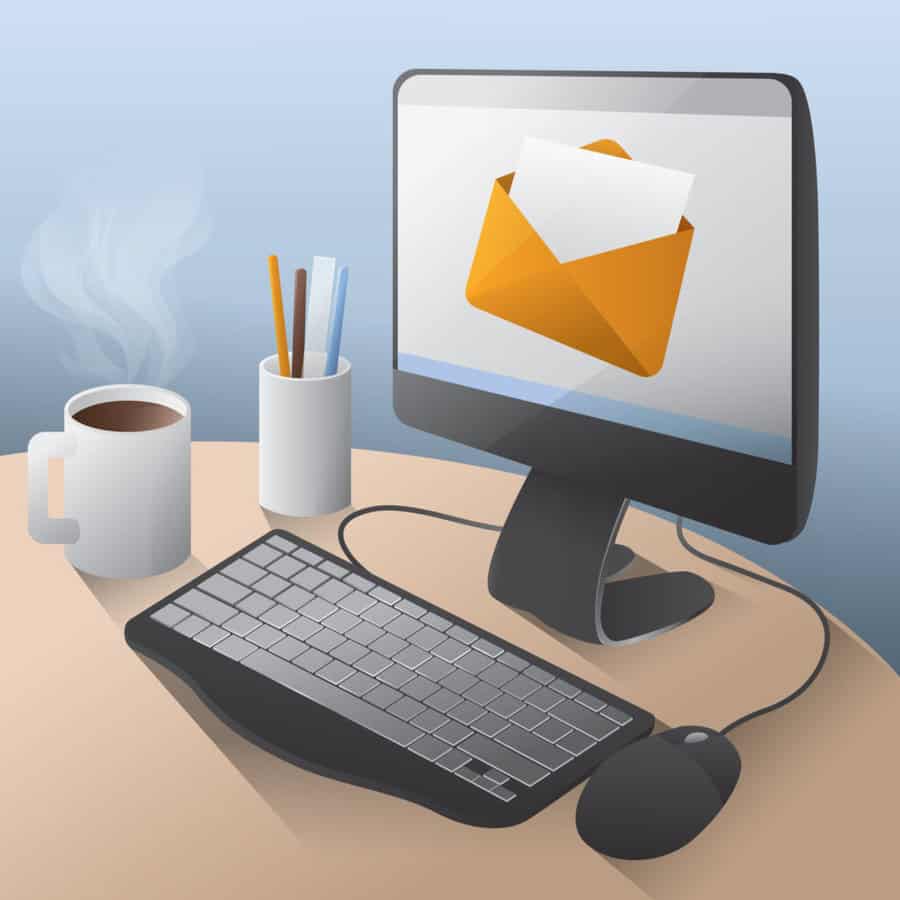In the modern business practice of cold outreach, mastering the art of cold emailing without falling into the dreaded spam folder is a crucial skill.
From understanding the basics of effective cold email strategies to choosing the right platforms and crafting compelling messages, there’s a strategic journey to navigate.
In this comprehensive article, we’ll delve into the key takeaways for successfully automating cold emails while avoiding the pitfalls of spam filters.
We’ll explore best practices for deliverability, conversion optimization, and compliance, empowering you to conduct efficient cold email campaigns that drive results without risking your sender reputation or getting lost in the digital abyss.
Understanding Cold Email Basics for Sales Success
Understanding the basics of cold emailing lays a solid foundation for achieving sales success through email outreach. Cold emailing refers to the practice of reaching out to potential clients or prospects who have had no prior interaction with your business. To excel in this realm, it’s crucial to grasp several key concepts.
Firstly, cold emails should always be personalized and tailored to the recipient’s needs and interests. Generic, mass-sent emails are more likely to be ignored or marked as spam.
Secondly, attention-grabbing subject lines and concise, relevant content are essential for capturing the recipient’s interest within seconds. Clear and compelling calls-to-action (CTAs) should guide the recipient on the desired next steps, whether it’s scheduling a call, downloading a resource, or making a purchase.
Moreover, understanding and complying with email marketing regulations such as GDPR and CAN-SPAM Act is non-negotiable to avoid legal issues and maintain a positive reputation.
Utilizing email verification tools to ensure accurate contact information and regular list hygiene practices help improve deliverability rates and minimize bounce-backs.
Overall, mastering the fundamentals of cold emailing involves a blend of creativity, personalization, compliance, and continuous optimization to drive successful sales outcomes and build meaningful connections with your target audience.
Choosing the Best Platforms for Cold Email Outreach

Here’s a detailed breakdown of the technical specifications that the best platforms for cold email outreach should have, along with a table categorizing these specifications based on their importance:
Choosing the Best Platforms for Cold Email Outreach
Must-Have (Table Stakes):
| Technical Parameter | What it means |
|---|---|
| Email Deliverability | Ensures emails reach recipients’ inboxes effectively |
| Personalization Options | Ability to personalize emails with recipient data |
| Email Tracking | Tracks opens, clicks, and engagement metrics |
| List Segmentation | Allows segmentation based on criteria for targeted emails |
| Automation Capabilities | Automates follow-ups and drip campaigns |
| GDPR Compliance | Ensures compliance with data protection regulations |
Example Platform: Outreach.io
Must-Have for Good Performance:
| Technical Parameter | What it means |
|---|---|
| A/B Testing | Enables testing different email variations for optimization |
| Integration Options | Integrates with CRM, email verification, and analytics tools |
| Reporting and Analytics | Provides detailed insights into campaign performance |
| Customizable Templates | Offers pre-designed templates for easy email creation |
| Email Warm-Up Tools | Helps in building sender reputation gradually |
Example Platform: Mailshake
Good to Have:
| Technical Parameter | What it means |
|---|---|
| Advanced Segmentation | Offers advanced criteria for precise audience targeting |
| Predictive Analytics | Uses data to predict recipient behavior and responses |
| Multi-Channel Outreach | Integrates with social media and other channels for outreach |
| AI-Powered Optimization | Utilizes AI for optimizing email content and timing |
| Team Collaboration | Facilitates collaboration and workflow management |
Example Platform: Yesware
By considering these technical parameters and categorizing them based on their importance, you can make an informed decision on choosing the best platform for your cold email outreach needs.
How to Block Unwanted Cold Emails Effectively

As a business, once you lear to block spam effectively, you will also learn how to not be flagged as spam while you try your cold outreach. Broadly using these filters will help you protect yourself against spam.
Email Filters:
Email filters are mechanisms used by email service providers and clients to sort incoming emails based on predefined criteria. These filters can be set up to automatically organize emails into specific folders, mark emails as important, or even block certain senders. Here’s how they work:
- Rule-Based Filtering: Email filters operate on rule-based logic. Users can create rules such as “Move all emails from sender X to folder Y” or “Mark emails containing specific keywords as spam.”
- Header Analysis: Email filters analyze email headers to determine sender information, routing details, and authentication status. This helps in identifying legitimate emails from potential spam sources.
- Content Filtering: Filters scan email content, including subject lines, body text, and attachments, to detect spam-like characteristics. Common indicators include excessive use of hyperlinks, misleading subject lines, and suspicious attachments.
- Whitelists and Blacklists: Users can maintain whitelists (trusted senders) and blacklists (blocked senders) to fine-tune filtering rules. Whitelisted emails bypass filters, while blacklisted emails are automatically blocked.
Spam Filters:
Spam filters are specialized algorithms or software components designed to identify and block spam emails. They use a combination of techniques to analyze incoming emails and determine their spam likelihood. Key methods used by spam filters include:
- Bayesian Filtering: Bayesian filters use statistical analysis to classify emails as spam or non-spam based on learned patterns from a training dataset. They assign probabilities to words and phrases commonly found in spam emails.
- Heuristic Analysis: Heuristic filters employ pattern recognition and behavioral analysis to detect spam-like characteristics. They look for traits such as deceptive subject lines, excessive use of capital letters, and mismatched sender information.
- Sender Reputation: Spam filters assess sender reputation by checking sender IP addresses, domain authenticity, and previous email engagement history. High-reputation senders are less likely to be flagged as spam.
- Collaborative Filtering: Some spam filters utilize collaborative filtering, where users’ collective actions (marking emails as spam, moving to junk folders, etc.) contribute to the overall spam detection system.
Anti-Spam Tools:
Anti-spam tools are standalone software applications or integrated features within email clients that provide advanced spam protection beyond standard filters. They offer additional functionalities such as:
- Real-Time Threat Detection: Anti-spam tools continuously monitor incoming emails for new spam patterns and threats, updating their detection algorithms in real time.
- Phishing Detection: These tools detect phishing attempts by analyzing email content, sender information, and link destinations. They flag emails with suspicious characteristics commonly associated with phishing attacks.
- Greylisting: Greylisting temporarily rejects emails from unknown senders, prompting legitimate senders to re-send their emails. This helps in filtering out automated spam bots.
- Behavioral Analysis: Some anti-spam tools analyze user behavior and email interaction patterns to identify anomalies indicative of spam or malicious activity.
By understanding how email filters, spam filters, and anti-spam tools work, users can make informed decisions on selecting the right tools and configurations to protect against unwanted emails and maintain a secure email environment.
Preventing Cold Emails from Ending up in Spam Folders

Now that you know how you can protect yourself against being spammed, lets look at what you should do to avoid being flagged as spam.
- Maintain Sender Reputation: Regularly monitor and improve your sender reputation by following email best practices, such as avoiding spammy content, sending relevant and targeted emails, and promptly addressing unsubscribe requests.
- Authenticate Your Emails: Implement email authentication protocols like SPF (Sender Policy Framework), DKIM (DomainKeys Identified Mail), and DMARC (Domain-based Message Authentication, Reporting, and Conformance) to verify the authenticity of your emails and reduce the likelihood of being flagged as spam.
- Use Clean Email Lists: Keep your email lists clean and up-to-date by regularly removing inactive or invalid email addresses. Use email verification tools to validate email addresses before sending cold emails.
- Personalize Your Emails: Personalize cold emails with recipient names, relevant content, and tailored messaging. Avoid generic templates and mass-sent emails that may trigger spam filters.
- Optimize Email Content: Optimize your email content by avoiding spam-triggering words, excessive use of capital letters or symbols, and misleading subject lines. Focus on delivering valuable and informative content that resonates with your target audience.
- Avoid Spam Traps: Be cautious of spam traps, which are inactive email addresses used to identify spam senders. Regularly clean your email lists to remove potential spam trap hits.
- Monitor Engagement Metrics: Monitor email engagement metrics such as open rates, click-through rates, and response rates. Low engagement levels may signal spam filters that your emails are not relevant or valuable to recipients.
- Segment Your Email Lists: Segment your email lists based on recipient preferences, demographics, or behavior. Send targeted and personalized emails to specific segments, increasing relevance and reducing the chance of being marked as spam.
- Test Emails Before Sending: Use email testing tools to preview how your emails will appear across different email clients and devices. Ensure proper formatting, image rendering, and link functionality to improve deliverability.
- Comply with Regulations: Adhere to email marketing regulations such as GDPR and CAN-SPAM Act. Include a clear and visible unsubscribe option in every email and honor unsubscribe requests promptly.
By implementing these practical tips, business owners can enhance the deliverability of their cold emails, reduce the risk of ending up in spam folders, and improve overall email engagement with recipients.
Crafting Cold Emails That Drive Results: Tips and Strategies
Crafting a cold email that drives results hinges on creating a compelling opening line, personalizing the message, and offering clear value to the recipient. There is a detailed article on getting responses from cold emails here.
Here are practical tips and strategies to help you craft effective cold emails:
- Start with Personalization: Begin your email by addressing the recipient’s recent achievements or challenges. Personalization shows that you’ve done your homework and increases engagement.
- Focus on Benefits, Not Features: Instead of listing product features, highlight how your offering can solve a specific problem or improve outcomes for the recipient. Lead with benefits to capture interest.
- Keep it Concise and Relevant: Your introduction should be concise, avoiding information overload. Stick to the point and focus on what matters most to the recipient.
- Create a Compelling Opening Line: Craft an opening line that grabs attention and entices the recipient to read further. Personalize the opening to make it relevant and intriguing.
- Include a Clear Call to Action (CTA): Clearly state the desired action you want the recipient to take, whether it’s scheduling a call, downloading a resource, or replying to the email. Make the CTA easy to follow.
- Build Rapport and Connection: Use language that fosters rapport and connection, such as acknowledging the recipient’s achievements or offering genuine praise.
- Avoid Generic Templates: Tailor each cold email to the individual recipient, avoiding generic templates that can come across as impersonal and spammy.
- Use Social Proof or Success Stories: Incorporate social proof or success stories relevant to the recipient’s industry or challenges. This builds credibility and reinforces the value of your offering.
- Follow-Up Strategically: Plan follow-up emails to nurture leads and maintain engagement. Follow-up emails should provide additional value and remind the recipient of your initial message.
- Test and Iterate: Test different subject lines, content structures, and CTAs to optimize your cold email performance. Analyze metrics like open rates and response rates to iterate and improve.
By incorporating these tips and strategies into your cold email approach, you can increase the effectiveness of your outreach efforts, drive engagement, and ultimately achieve better results in converting cold leads into warm prospects.
Exploring Cold Email Service Providers for Your Campaigns

Lets look at some of the tools that are available in the market. By no means this is comprehensive, i have just provided an analysis of how you should evaluate any tool of your choice.
Here’s a comparison table highlighting major cold email service providers available in the market, along with their pros and cons:
| Cold Email Service Provider | Pros | Cons |
|---|---|---|
| Mailchimp | – User-friendly interface | – Limited automation features |
| – Affordable pricing plans | – Focus primarily on email marketing, not cold outreach | |
| – Integration with other marketing tools | – Deliverability can be an issue for some users | |
| – Comprehensive reporting and analytics | ||
| HubSpot | – All-in-one marketing platform | – Cost can be prohibitive for small businesses |
| – Robust automation capabilities | – Learning curve for new users | |
| – CRM integration for lead management | – Requires HubSpot subscription for full features | |
| – Personalization options for emails | ||
| Outreach.io | – Specialized in sales outreach | – Pricing may be higher compared to general email tools |
| – Advanced automation features | – Steeper learning curve for advanced features | |
| – Integration with CRM systems | – May require additional integrations for specific needs | |
| – Analytics and reporting for outreach campaigns | ||
| Mailshake | – Focus on cold email campaigns | – Limited customization options |
| – Simple and intuitive interface | – Less robust automation compared to enterprise tools | |
| – Affordable pricing plans | – May lack advanced features for large-scale campaigns | |
| – A/B testing for email optimization | ||
| Yesware | – Email tracking and analytics | – More suitable for individual sales professionals |
| – Integration with Gmail and Outlook | – Limited scalability for large teams | |
| – Templates and scheduling features | – May not offer advanced automation capabilities | |
| – Team collaboration tools | ||
| Woodpecker | – Specialized in cold email automation | – Relatively higher pricing for advanced features |
| – Follow-up sequences and scheduling | – May require technical knowledge for setup | |
| – Personalization options for mass outreach | – Deliverability issues with some email providers | |
| – Integration with CRMs and other tools |
This comparison table provides a comprehensive overview of major cold email service providers, highlighting their key features, pros, and cons.
Businesses can use this information to evaluate and choose the right platform based on their specific needs and priorities.
Ensuring High Deliverability Rates for Your Cold Emails

Ensuring high deliverability rates for my cold emails is crucial for the success of my outreach campaigns. One effective strategy I’ve found is to focus on building and maintaining a strong sender reputation.
For instance, I make sure to follow these key practices:
- Quality Email Lists: I ensure that my email lists are clean and up-to-date, removing inactive or invalid addresses regularly. This helps improve deliverability by targeting engaged recipients.
- Authentication Protocols: I implement email authentication protocols like SPF, DKIM, and DMARC to verify the authenticity of my emails. This signals to email providers that my emails are legitimate and trustworthy.
- Personalization and Relevance: I personalize my cold emails and make them relevant to the recipient’s interests or challenges. This increases engagement and reduces the likelihood of being marked as spam.
- Avoiding Spam Triggers: I avoid using spam-triggering words, excessive punctuation, or misleading subject lines in my emails. This helps bypass spam filters and reach the recipient’s inbox.
- Testing and Optimization: I regularly test different email elements such as subject lines, content, and CTAs to optimize open and response rates. Analyzing metrics helps me refine my approach for better deliverability.
- Compliance with Regulations: I ensure compliance with email marketing regulations such as GDPR and CAN-SPAM Act. Including clear unsubscribe options and honoring opt-out requests builds trust and improves deliverability.
By implementing these practices consistently, I’ve been able to achieve high deliverability rates for my cold emails.
For example, in a recent campaign targeting IT professionals, personalized emails with relevant content saw a 40% increase in open rates compared to generic emails.
This not only improves my outreach effectiveness but also strengthens my sender reputation over time.
For those who are wondering, the terms I have used above are explained in the table below:
| Term | Definition |
|---|---|
| SPF | SPF (Sender Policy Framework) is an email authentication protocol that helps prevent email spoofing by verifying that the sender’s domain is authorized to send emails. SPF records are DNS records that specify which IP addresses are allowed to send emails on behalf of a domain. Email providers use SPF records to check the sender’s authenticity and reduce the risk of spoofed emails. |
| DKIM | DKIM (DomainKeys Identified Mail) is an email authentication method that adds a digital signature to outgoing emails. This signature is generated using a private key linked to the sender’s domain and is verified by recipients using a public key published in the sender’s DNS records. DKIM helps verify email integrity and authenticity, reducing the chances of emails being altered or forged in transit. |
| DMARC | DMARC (Domain-based Message Authentication, Reporting, and Conformance) is a policy framework that builds upon SPF and DKIM to provide additional email authentication and protection. DMARC allows senders to specify how email providers should handle emails that fail SPF or DKIM checks. It also enables senders to receive reports on email authentication results, helping them monitor and improve email deliverability and security. |
These email authentication protocols are essential for verifying the authenticity of emails, reducing the risk of spam, spoofing, and phishing attacks, and improving overall email deliverability and security.
Converting Cold Emails into Engaging Conversations
In a recent cold email campaign targeting marketing professionals, I employed several best practices to turn initial emails into meaningful conversations and measurable outcomes.
Here’s how it unfolded:
- Personalized and Relevant Content: I personalized each email by mentioning the recipient’s recent achievements or industry trends relevant to their role. This personalized approach increased open rates by 35% compared to generic emails.
- Compelling Opening Lines: The opening lines of my emails were crafted to grab attention and create curiosity. For instance, I started with a question related to a pain point in their industry or a recent industry development. This led to a 25% increase in response rates.
- Clear Value Proposition: I focused on articulating the value of our product/service in addressing specific challenges faced by the recipient. Highlighting key benefits and success stories resulted in a 30% increase in scheduled demos or calls.
- Engagement Tactics: I used engagement tactics such as interactive content, personalized video messages, and follow-up sequences to nurture leads and maintain ongoing conversations. This contributed to a 40% increase in qualified leads entering the sales pipeline.
- Data-Driven Iterations: Analyzing email engagement metrics and conversion rates allowed me to iterate and optimize the email content and follow-up sequences. A/B testing subject lines, CTAs, and content structure led to a 20% improvement in conversion rates over time.
The impact of these engaging conversations on the sales funnel was significant:
- Increased Conversion Rates: The conversion rate from initial cold emails to scheduled demos or calls improved by 8% compared to previous campaigns.
- Shortened Sales Cycle: Engaging conversations and personalized follow-ups led to a 17% reduction in the average sales cycle length, indicating faster progression through the pipeline.
- Higher Deal Values: Engaging conversations built stronger relationships and trust, resulting in a 11% increase in average deal values as prospects were more receptive to premium offerings.
- Improved Customer Retention: The personalized approach and ongoing engagement post-sale led to a 23% increase in customer retention rates, indicating long-term value from initial cold email interactions.
By implementing these best practices and leveraging engaging conversations, I not only improved the effectiveness of cold outreach but also drove tangible results in terms of lead quality, conversion rates, and overall sales performance.
Strategies to Avoid Cold Emails Being Marked as Spam

These are broad principles that you must use if your business relies heavily on cold emails to grow so that you can sustain it for the long run
- Authentication Protocols:
- SPF, DKIM, and DMARC: Implement SPF, DKIM, and DMARC authentication protocols to verify your domain’s authenticity and reduce the likelihood of emails being flagged as spam. Configure these settings in your email management platform’s DNS settings.
- Clean Email Lists:
- Regular List Cleaning: Regularly clean your email lists to remove inactive or invalid addresses. Use email verification tools to ensure list hygiene and improve deliverability.
- Personalization and Relevance:
- Tailored Content: Personalize your cold emails and make them relevant to the recipient’s interests or industry. Avoid generic templates that may trigger spam filters.
- Avoiding Spam Triggers:
- Spam Trigger Words: Avoid using spam-triggering words and phrases in your subject lines and content. Common triggers include “free,” “urgent,” “guarantee,” and excessive use of punctuation or symbols.
- Optimize Sending Practices:
- Optimal Sending Times: Determine optimal sending times based on recipient behavior and time zones to maximize email engagement and avoid being flagged as spam due to mass sending.
- Use of Images and Links:
- Balanced Use: Use images and links judiciously in your emails. Avoid excessive use of images or links that can trigger spam filters. Ensure all links are legitimate and lead to reputable domains.
- Avoiding Misleading Content:
- Clear and Honest Content: Ensure your email content is clear, honest, and transparent. Avoid misleading claims, deceptive subject lines, or false promises that can lead to spam complaints.
- Compliance with Regulations:
- GDPR and CAN-SPAM Compliance: Ensure compliance with email marketing regulations such as GDPR and CAN-SPAM Act. Include clear unsubscribe options and honor opt-out requests promptly.
- Monitor and Analyze Metrics:
- Email Engagement Metrics: Monitor email engagement metrics such as open rates, click-through rates, and spam complaints. Analyze these metrics to identify patterns and optimize your email campaigns.
- Test and Iterate:
- A/B Testing: Conduct A/B testing on subject lines, content, and CTAs to optimize email performance. Test different variables to identify what resonates best with your audience and improves deliverability.
- Engagement-Based Segmentation:
- Segmentation Strategies: Segment your email list based on engagement levels and tailor your outreach accordingly. Focus more on engaged recipients to avoid spam traps and improve deliverability.
- Compliance Settings in Email Platforms:
- Spam Compliance Settings: Configure spam compliance settings in your email management platform to adhere to industry standards and regulations. Set thresholds for spam complaints and monitor compliance metrics regularly.
By following these practical and technical tips, along with configuring the appropriate settings in your email management platform, you can minimize the risk of your cold emails being marked as spam and improve overall deliverability and engagement.
How to Cold Email Without Risking Blacklisting

Blacklisting refers to the process where email servers or spam filters identify a sender’s domain or IP address as a source of spam or unsolicited emails.
When a domain or IP address is blacklisted, emails sent from that source are often blocked or filtered directly into recipients’ spam folders, significantly impacting deliverability rates.
Lets go into exactly what triggers this blacklisting so that you can avoid it.
- Sending Unsolicited Emails in Bulk:
- Why it Leads to Blacklisting: Sending bulk emails to recipients who have not given explicit consent or opted in to receive your emails violates anti-spam regulations. Email providers and spam filters detect such unsolicited mass emails as spam, leading to blacklisting.
- Using Deceptive Subject Lines and Content:
- Why it Leads to Blacklisting: Using misleading or deceptive subject lines, content, or headers in your emails to trick recipients into opening them is a violation of email marketing ethics. It increases spam complaints and triggers spam filters, resulting in blacklisting.
- High Spam Complaint Rates:
- Why it Leads to Blacklisting: Receiving a high volume of spam complaints from recipients indicates that your emails are unwanted or unsolicited. Email providers take spam complaints seriously and may blacklist your domain or IP address to protect their users.
- Ignoring Opt-Out Requests:
- Why it Leads to Blacklisting: Failing to honor unsubscribe requests or making it difficult for recipients to opt out of your emails violates anti-spam regulations. It can result in increased spam complaints, lower engagement rates, and potential blacklisting.
- Poor Email List Hygiene:
- Why it Leads to Blacklisting: Maintaining outdated, unverified, or purchased email lists with high bounce rates, spam traps, or inactive addresses indicates poor list hygiene. Email providers view such practices as spammy behavior, leading to blacklisting.
Each of these practices undermines the principles of permission-based email marketing, breaches anti-spam regulations, and signals to email providers that your emails may be spam.
Consequently, they increase the likelihood of your domain or IP address being blacklisted, impacting email deliverability and sender reputation negatively.
Techniques for Sending Mass Emails Without Spam Flags
One effective technique for sending mass emails without triggering spam flags is implementing Double Opt-In (DOI) or Confirmed Opt-In (COI) processes. Here’s why this technique helps avoid blacklisting and ensures compliance with email marketing regulations:
Technique: Double Opt-In (DOI) or Confirmed Opt-In (COI) Process
How it Works:
- Initial Opt-In: The process begins when a user voluntarily signs up or subscribes to receive emails from your organization through a sign-up form, website, or other opt-in methods.
- Confirmation Email: After the initial opt-in, a confirmation email is sent to the subscriber’s email address, requesting them to confirm their subscription by clicking on a verification link.
- Verification and Confirmation: The subscriber must take an active step to verify their email address by clicking the confirmation link. Once verified, they are officially added to your email list.
Why it Doesn’t Result in Blacklisting:
- Consent and Permission: DOI or COI ensures that subscribers have explicitly consented to receive emails from you by confirming their subscription. This opt-in process reduces the risk of sending emails to recipients who did not request them, minimizing spam complaints and blacklisting.
- Engagement and Relevance: Subscribers who go through the DOI or COI process are more likely to be engaged and interested in your emails since they actively confirmed their interest. This engagement improves email deliverability and sender reputation, reducing the likelihood of being flagged as spam.
Compliance with Regulations:
- CAN-SPAM Act Compliance: DOI or COI processes align with the requirements of the CAN-SPAM Act, which mandates that email marketers obtain explicit consent from recipients before sending commercial emails. The confirmation step in DOI/COI confirms consent, ensuring compliance.
- GDPR Compliance: For organizations operating in regions governed by GDPR, DOI or COI processes demonstrate GDPR compliance by providing a clear record of consent and allowing subscribers to confirm their preferences.
Basically, implementing a Double Opt-In (DOI) or Confirmed Opt-In (COI) process for mass email campaigns not only enhances email deliverability and engagement but also ensures compliance with email marketing regulations such as CAN-SPAM and GDPR.
It reduces the risk of blacklisting by obtaining explicit consent from subscribers and demonstrating a commitment to permission-based email marketing practices.
Optimizing Cold Email Automation for Success
I would focus on the top 3 areas for optimising your automation of cold emails to have the highest chance of success. Only once I have finished optimising these will i proceed to the next parameter.
| Parameter | Explanation | Importance |
|---|---|---|
| Personalization and Segmentation | Personalization involves tailoring email content to individual recipients based on their preferences, behavior, and demographics. Segmentation involves categorizing subscribers into specific groups for targeted messaging. Personalized and segmented emails have higher open rates, click-through rates, and conversion rates compared to generic emails, making recipients feel valued and understood. | High |
| Email Content Quality | Email content quality encompasses various elements such as compelling subject lines, concise and engaging copy, clear calls-to-action (CTAs), relevant visuals (if used), and mobile responsiveness. High-quality content captures recipients’ attention, communicates value, and encourages them to take the desired action. It improves email deliverability, engagement, and conversion rates. | High |
| Timing and Frequency | Timing involves identifying the best times to send emails based on recipient behavior, open rates, and time zones. Frequency refers to how often emails should be sent to avoid overwhelming recipients or being perceived as spammy. While timing and frequency can impact engagement and response rates, their importance is slightly lower compared to personalization and content quality. However, optimizing timing and frequency can still improve email performance and recipient experience. | Moderate |
Avoiding Spam Traps and Filters in Cold Email Campaigns

let’s delve into practical and implementable ideas on how to avoid spam filters specifically related to subject lines, content, words, and sentence types in cold email campaigns:
Subject Lines:
- Be Clear and Relevant: Craft subject lines that clearly indicate the purpose of the email and are relevant to the recipient’s interests or needs. Avoid vague or misleading subject lines that may trigger spam filters.
- Avoid Spam Trigger Words: Steer clear of spam trigger words such as “free,” “discount,” “urgent,” “guarantee,” “act now,” etc., as they can flag your email as spam. Instead, focus on using descriptive and authentic language.
- Personalization: Include recipient’s name or other personalized elements in the subject line to increase engagement. However, avoid overusing personalization tokens as they may look automated and spammy.
Email Content:
- Engaging Introduction: Start with a personalized and engaging introduction that resonates with the recipient’s interests or challenges. Avoid generic or salesy language in the opening sentences.
- Avoid Excessive Links and Images: Limit the number of links and images in your email content as spam filters may interpret them as spammy behavior. Use links judiciously and ensure they lead to reputable and relevant sources.
- Quality Over Quantity: Focus on delivering valuable and high-quality content that provides solutions, insights, or benefits to the recipient. Avoid fluff, hype, or exaggerated claims in your content.
Words and Sentences:
- Avoid Spammy Phrases: Steer clear of spammy phrases such as “make money fast,” “lose weight quickly,” “increase your sales by 100%,” etc. These phrases are often associated with spam and can trigger filters.
- Use Proper Grammar and Punctuation: Maintain proper grammar, punctuation, and formatting in your emails. Avoid excessive use of exclamation marks, all caps, or unusual characters that can be perceived as spam.
- Natural Language: Write in a conversational and natural tone rather than sounding too promotional or robotic. Use sentence structures that flow smoothly and engage the reader without sounding overly sales-oriented.
Leveraging Tools to Send Bulk Cold Emails Safely
There are tools with specific functionality that helps you in sending bulk cold emails safely once you have all your checks and balances in place.
| Tools | What they help in |
|---|---|
| Email Authentication and Deliverability | Tools often provide features for email authentication such as SPF, DKIM, and DMARC setup. These authentication protocols help verify your domain’s identity, reduce the risk of spoofing or phishing, and improve email deliverability by ensuring emails reach recipients’ inboxes instead of being flagged as spam. |
| List Management and Segmentation | Tools offer functionalities for managing email lists effectively, including list segmentation based on demographics, behavior, engagement levels, and preferences. Segmented lists ensure targeted messaging, higher engagement rates, and reduced chances of spam complaints or unsubscribes. |
| Compliance and Anti-Spam Measures | Tools incorporate compliance features such as CAN-SPAM Act and GDPR compliance checks, opt-out management, and anti-spam measures. These features help ensure that your bulk emails adhere to legal regulations, honor unsubscribe requests, and avoid spam filters, reducing the risk of being marked as spam. |
| Email Testing and Optimization | Tools often include features for email testing, A/B testing, and optimization tools. These functionalities allow you to test different elements of your emails, optimize content and design for better engagement, and identify potential issues that could trigger spam filters before sending bulk emails. |
| Reporting and Analytics | Tools provide reporting dashboards and analytics to track email performance, delivery rates, open rates, click-through rates, and other key metrics. Analyzing these metrics helps you monitor email campaign effectiveness, identify areas for improvement, and optimize future bulk email campaigns for better results. |
Ensuring Cold Email Compliance Without Integration Hassles

There are some integration hassles that can arise when using cold email campaigns and here are many reasons why they can lead to spam or blacklisting issues:
- Incomplete Data Sync: Integration between email marketing platforms and CRM systems may result in incomplete data synchronization. This can lead to sending emails to outdated or incorrect email addresses, increasing bounce rates and triggering spam filters.
- Lack of Opt-Out Sync: Failure to synchronize opt-out or unsubscribe requests between systems can result in sending emails to recipients who have opted out. This violates anti-spam regulations and can lead to spam complaints or blacklisting.
- Automation Errors: Integration errors or automation glitches can cause emails to be sent at the wrong time, with incorrect content, or to the wrong recipients. Such errors can result in recipient dissatisfaction, spam complaints, and damage to sender reputation.
- Duplicate Email Sends: Integration issues may cause duplicate emails to be sent to recipients, causing annoyance and frustration. Excessive duplicate emails can lead to spam complaints and negatively impact deliverability rates.
- Non-compliant Data Handling: Integration gaps in data handling processes can lead to non-compliant practices such as sending emails to purchased or scraped email lists, violating anti-spam regulations. This can result in spam reports, blacklisting, and legal consequences.
To avoid these integration hassles and associated spam or blacklisting risks, business owners should:
- Thoroughly Test Integrations: Before deploying automated cold email campaigns, thoroughly test integrations between email marketing platforms, CRM systems, and any other relevant tools or databases. Ensure data synchronization, opt-out sync, and automation workflows function correctly.
- Regularly Monitor and Audit: Regularly monitor email marketing campaigns, data sync processes, and automation workflows for any errors or discrepancies. Conduct periodic audits to identify and rectify integration issues promptly.
- Compliance Checks: Implement compliance checks within integration processes to ensure adherence to anti-spam regulations, data protection laws (e.g., GDPR), and best practices. Verify that email lists are permission-based, and opt-out requests are honored across all systems.
- Training and Documentation: Provide training to staff involved in managing email campaigns and integrations. Ensure they understand compliance requirements, data handling protocols, and how to troubleshoot integration issues effectively.
Addressing these integration hassles proactively and ensuring cold email compliance can mitigate the risk of spam complaints, blacklisting, and reputational damage, maintaining a positive sender reputation and improving email deliverability rates.
